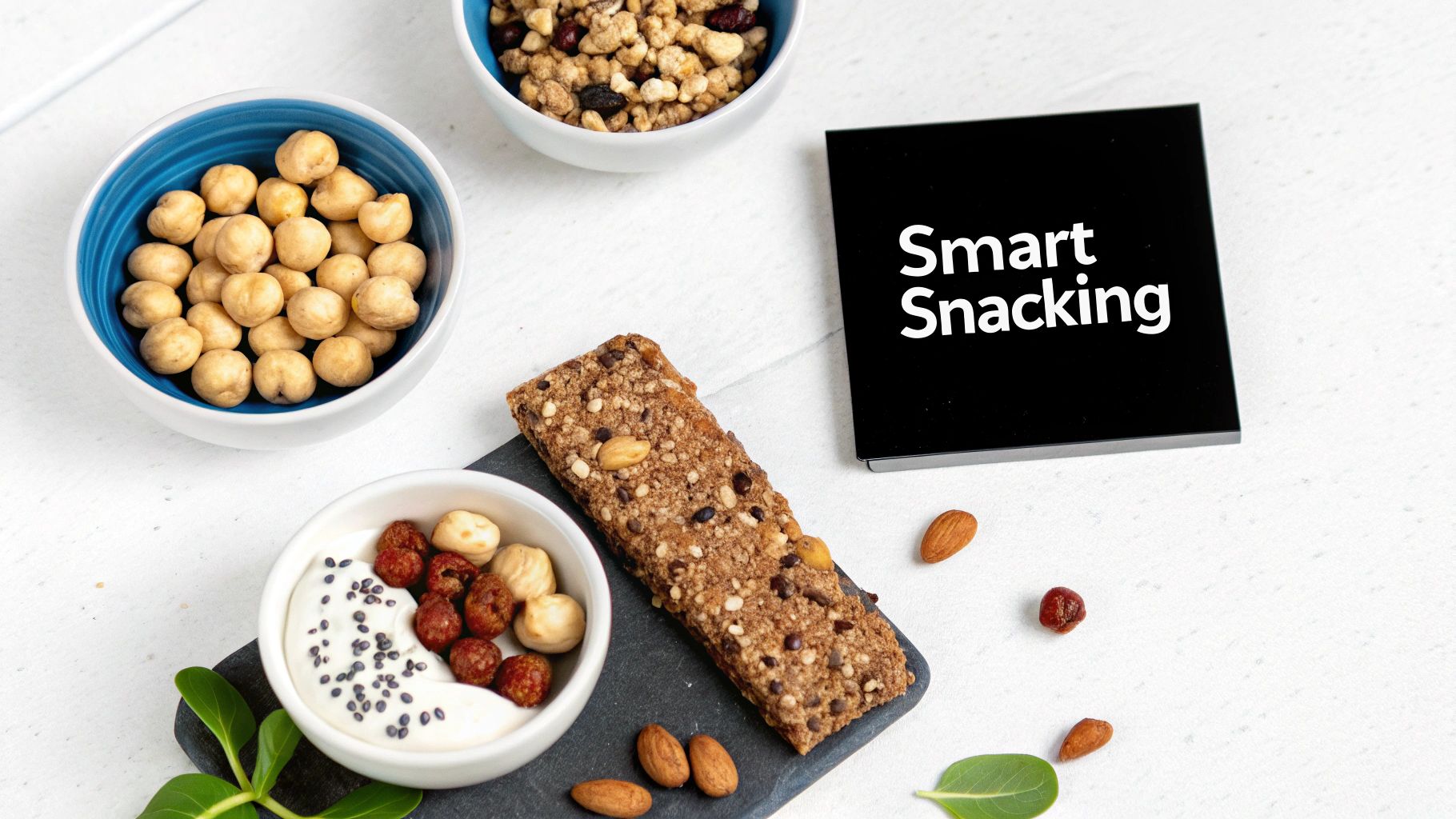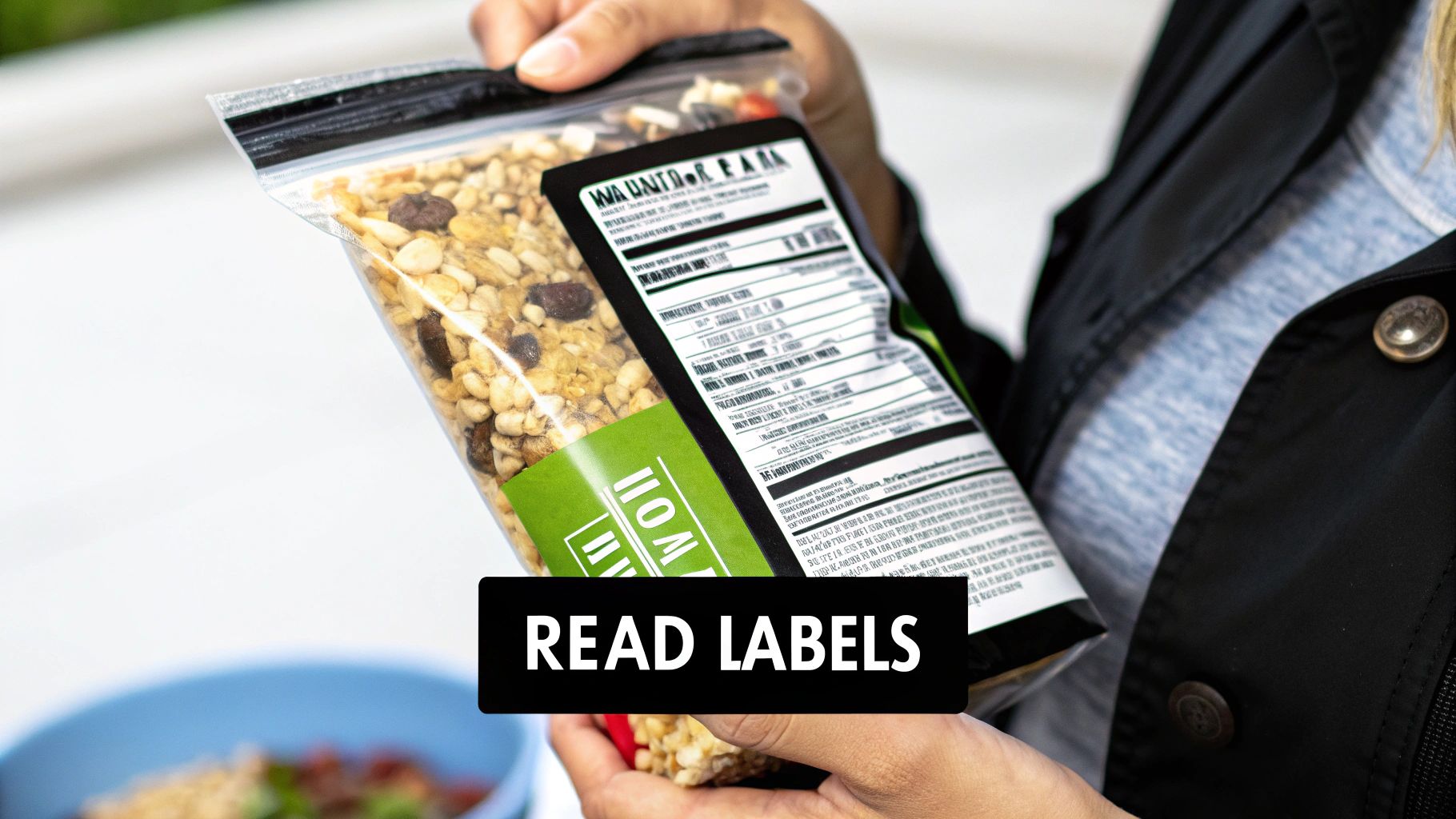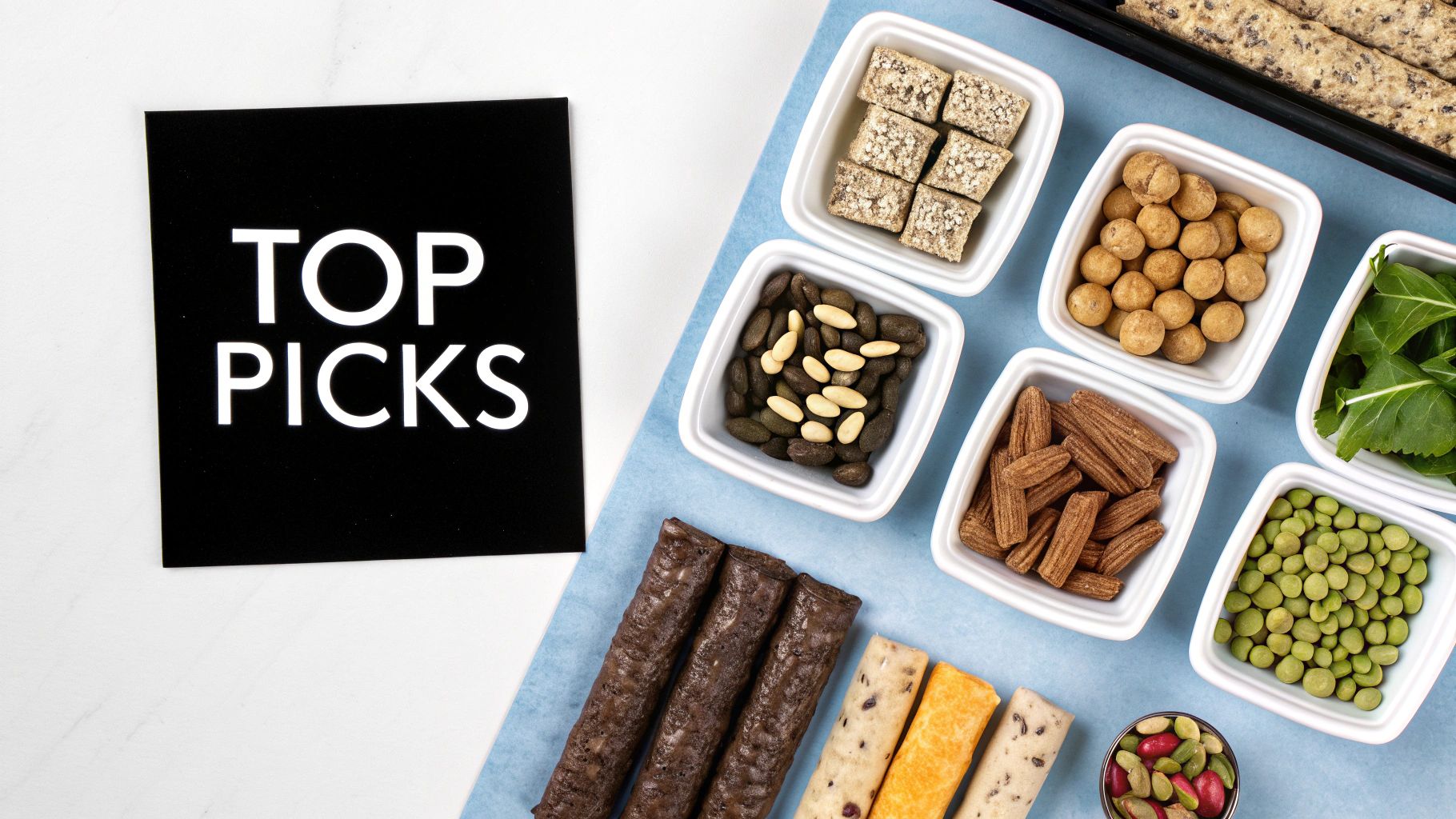Your Guide to Gluten Free High Protein Snacks
Share
When you're looking for a snack that truly works for you, finding one that's both gluten-free and high in protein is a game-changer. These aren't just snacks to tide you over; they're designed to keep you feeling full, help your muscles recover, and dodge the dreaded energy crash that comes with sugary, gluten-heavy options. Let's walk through how to find the best ones with confidence.
Why Gluten-Free High-Protein Snacks Are So Essential
Let's be real: the snack aisle is overwhelming. Finding something that fits your gluten sensitivity and actually gives you lasting energy can feel like a treasure hunt. But combining a gluten-free diet with a high-protein intake is a genuinely powerful strategy, whether you're a serious athlete or just a busy professional trying to stay sharp through the afternoon.
There's a reason you're seeing more and more of these options on the shelves. The global gluten-free snacks market was valued at around USD 1.1 billion and is expected to more than double to USD 2.6 billion. That’s a massive shift in how we think about food. You can get more details on this incredible market growth from InsightAce Analytic. This isn't just another fad; it's a fundamental move toward eating with purpose.

The Dual Advantage of This Powerful Combo
So, what’s the secret sauce behind this combination? Think of it as a one-two punch for your body's needs. The gluten-free part takes care of your digestive health, while the high-protein element gives you the fuel for strength and keeps hunger at bay. Together, they create a fantastic foundation for feeling your best.
This guide is your roadmap to making smarter snacking choices. We'll cover everything you need to know:
- The simple science behind why this pairing works so well.
- How to become a pro at reading labels to spot the truly good stuff.
- My top recommendations for convenient, grab-and-go snacks.
- Easy recipes for whipping up your own delicious snacks at home.
By focusing on gluten-free, high-protein snacks, you're doing more than just avoiding a potential stomachache. You're actively giving your body the high-quality fuel it needs to thrive, repair itself, and maintain steady energy all day long.
This approach helps you sidestep the empty calories and blood sugar rollercoasters that so many typical snacks cause. Every bite you take is a step toward your health goals.
Why Gluten-Free and High-Protein are a Perfect Match
Think about building a sturdy house. You can't just start putting up walls; you need a solid, reliable foundation first. That's what going gluten-free does for many people. It creates a stable base by supporting gut health and potentially lowering inflammation, which is especially important for anyone with celiac disease or gluten sensitivity. With that foundation in place, your body can absorb nutrients much more effectively.
Now, what about the bricks and mortar? That’s where protein comes in. High-quality protein delivers the essential amino acids your body needs for just about everything—repairing muscle, producing hormones, and keeping your immune system strong. When you combine a gluten-free approach with a high-protein intake, your snacks stop being just fillers and start becoming powerful tools for building a more resilient, energetic you.
This duo is also a game-changer for your energy levels. Instead of the rollercoaster ride you get from sugary, quick-burning carbs, a gluten free high protein snack provides a steady, sustained release of fuel. Protein slows down digestion, which helps keep your blood sugar stable and makes you feel full and focused for much longer.
Smart Snacking for Different Goals
The beauty of this combination is that it isn't a one-size-fits-all solution. It's a flexible strategy that you can adapt to support your specific lifestyle and goals.
- For the Athlete or Gym-Goer: After a tough workout, your muscles are primed for repair. A gluten-free, high-protein snack gives them the clean fuel they need to rebuild, but without the digestive issues gluten can sometimes cause. The result? A smoother, faster recovery.
- For Weight Management: Feeling full and satisfied is half the battle. Protein is incredibly effective at taming hunger and helping you consume fewer calories overall. Choosing these kinds of snacks helps you manage cravings and stick to your plan without feeling like you're missing out.
- For the Busy Professional: We’ve all been there—that dreaded mid-afternoon slump. A protein-packed, gluten-free snack can be your secret weapon for staying sharp and productive, helping you avoid the brain fog that so often follows a carb-heavy snack.
Here's a simple way to look at it: Gluten-free clears the way for your body to run at its best, while high-protein provides the high-performance fuel. Together, they help you dodge those energy dips and build a stronger foundation for your health.
This isn't just a niche trend; it's a major shift in the food world. High-protein options are becoming a huge growth driver within the larger gluten-free market. In fact, bakery items like gluten-free protein bars and muffins now make up over 30% of total sales in the category, all thanks to new recipes that deliver both great taste and a serious protein boost. You can dig deeper into how this market is changing on Fortune Business Insights. It’s clear that people want food that’s not only safe for their dietary needs but also genuinely powerful from a nutritional standpoint.
Decoding Food Labels for Safe Snacking

Walking down the snack aisle can feel like navigating a maze of flashy claims and confusing terms. To find the best gluten free high protein snacks, you have to become a savvy label reader. Don't worry, this isn't about memorizing complex chemical names; it's about knowing exactly what to look for.
Think of a food label as a product's resume. You wouldn't hire someone without checking their qualifications, right? The same logic applies here. Learning to vet a snack's credentials helps you see past the slick marketing and choose foods that genuinely support your health.
Step 1 Look for the Gluten-Free Certification
First things first: you need to be certain the snack is truly safe for a gluten-free diet. A lot of packages slap "gluten-free" on the front, but the real gold standard is a Certified Gluten-Free seal from a trusted third-party group like the Gluten-Free Certification Organization (GFCO).
This little seal is a big deal. It means the product was independently tested and verified to contain less than 10 parts per million (ppm) of gluten. That's actually a stricter standard than the FDA's requirement of 20 ppm. For anyone with celiac disease or high sensitivity, that seal provides crucial peace of mind against cross-contamination from shared facilities.
Step 2 Analyze the Protein Content
Next up, flip that package over to the Nutrition Facts panel and see if the "high protein" claim is legit. A good benchmark to aim for is at least 10 grams of protein per serving. That's a solid amount that will actually make a difference in keeping you full and helping your muscles recover.
But the protein grams don't tell the whole story. You have to consider the protein-to-calorie ratio. A snack with 10 grams of protein for 150 calories is a much more efficient choice than one with 10 grams of protein for 300 calories. This ratio is what makes every bite count, which is especially important if you have specific fitness or weight management goals.
A truly effective high-protein snack delivers a significant protein punch without an excessive amount of calories or sugar. Prioritize snacks where protein is a primary contributor to the total calorie count.
Step 3 Scan the Ingredient List
Finally, give the ingredient list a quick scan. This is your chance to spot hidden gluten sources and get a feel for the overall quality of what you're eating.
- Prioritize Whole Foods: Look for ingredients you can easily picture, like nuts, seeds, chickpeas, or pea protein. Snacks built on whole foods almost always pack a bigger nutritional punch.
- Watch for Hidden Gluten: Be a little wary of vague terms like "natural flavors," "modified food starch," or "maltodextrin." These can sometimes contain wheat, so you'll want to see a gluten-free certification to be sure.
- Check for Allergens: The "Contains" statement, usually right below the ingredient list, is a legally required declaration of major allergens like wheat, soy, and dairy. It's a great spot for a final, quick confirmation.
Following this simple three-step process—verifying the certification, analyzing the protein, and scanning the ingredients—will help you cut through the noise. You’ll be able to confidently pick snacks that are not only safe but also perfectly aligned with your wellness goals.
Our Top Picks for Packaged Snacks

While whipping up your own snacks is great, let's be real—life gets busy. For those moments when you just need to grab something and go, having a few trusted, pre-packaged gluten free high protein snacks on hand is a lifesaver. The trick is finding products that actually live up to their claims without being loaded with sugar and weird fillers.
We're pretty picky about what we recommend. Our go-to criteria are simple: clean, recognizable ingredients, a solid protein-to-calorie ratio, and very little added sugar. This mindset helps weed out the junk and find snacks that genuinely fuel your body. With the protein snack market expected to hit USD 10.83 billion, the variety is better than ever. We've moved way beyond basic protein bars into a world of high-quality, gluten-free crisps, puffs, and jerky. You can read more about this growth in the protein snacks market and the cool innovations it's sparking.
Protein Bars and Bites
Protein bars are the quintessential on-the-go snack, but they can be a minefield. Some are basically candy bars in disguise. We hunt for bars that are built on whole-food ingredients and pack a serious protein punch without that dreaded chalky aftertaste.
- What to Look For: Aim for 15-20 grams of protein and keep the sugar under 10 grams. We give extra points to brands that use natural sweeteners like dates or monk fruit.
- Example: Bars using whey isolate or a blend of plant-based proteins (like pea and brown rice) usually deliver a complete amino acid profile, making them perfect for post-workout recovery.
Savory Crisps and Puffs
Sometimes, you just need that salty, crunchy fix. Thankfully, snack companies have stepped up, creating awesome products that satisfy that craving while delivering a hit of protein. These are a far cry from the empty-calorie potato chips of the past.
Let go of the idea that crunchy snacks can't be good for you. The best ones now use protein sources like chickpeas, lentils, or even pea protein to create that amazing texture and a much better macronutrient profile.
These savory snacks are perfect for getting you through that 3 p.m. slump without the sugar crash that follows. If you want to dive deeper, check out our guide to more delicious high-protein savory snacks for more ideas.
Meat and Plant-Based Jerky
Jerky is a powerhouse snack. It's lightweight, super portable, and incredibly dense in protein. This makes it a fantastic choice for hikers, travelers, or anyone who needs a solid, non-perishable option to throw in their bag.
- Meat-Based: Look for grass-fed beef or free-range turkey jerky. The best ones have a short, simple ingredient list with minimal nitrates and sugar.
- Plant-Based: If you're avoiding meat, options made from mushrooms, soy, or seitan can offer that same chewy, savory experience. Just make sure to check for a certified gluten-free label, as some marinades use soy sauce or other gluten-containing ingredients.
Nutrient-Dense Nut and Seed Mixes
Trail mix is a classic for a reason. When you build the right blend, you get a powerful trio of protein, healthy fats, and fiber that keeps you going for hours.
Look for mixes that lean heavily on raw or roasted nuts and seeds, not the ones padded out with candy, yogurt-covered bits, or fried ingredients. A simple mix of almonds, walnuts, pumpkin seeds, and a few dried cherries offers sustained energy and a great texture, making it an excellent gluten free high protein snack for literally any time of day.
Easy DIY Snacks You Will Actually Make

Making your own gluten-free high-protein snacks puts you in the driver's seat. You control every single ingredient, tweak the flavors to your liking, and pack in as much protein as you need—all while saving a little money.
Best of all? It doesn't have to be a complicated, all-day kitchen project.
The recipes below are designed for real life. They come together fast, use ingredients you can actually find, and taste amazing. Let's dive into three simple ideas that will crush any craving and prove homemade is often the best way to go.
No-Bake Power Bites
When you need a quick burst of energy, these are your best friend. Think of them as tiny, nutrient-packed fuel cells that you don't even have to turn the oven on for. The basic formula couldn't be simpler: combine a protein source, something to hold it all together, and your favorite extras.
- The Protein: Start with a scoop of your go-to gluten-free protein powder. Whey, casein, or a good plant-based blend all work great.
- The Binder: Natural nut butter (like almond or peanut) or sunbutter is perfect. A little honey or maple syrup helps everything stick together.
- The Fun Stuff: This is where you get to be creative. Toss in certified gluten-free rolled oats, chia seeds for extra fiber, or dark chocolate chips just because.
Just mix everything in a bowl, roll it into bite-sized balls, and let them chill in the fridge for about 30 minutes. Each one can easily pack 5-7 grams of protein, making them an ideal pre-workout bite. If you're focusing on plant-based options, our guide on how to get enough protein on a plant-based diet has some great tips you can apply here.
Savory and Crunchy Roasts
When that salty, crunchy craving hits, roasted chickpeas or edamame are a game-changer. They deliver that satisfying crunch you're looking for but with a solid dose of protein and fiber—a far cry from greasy potato chips. And making them is as easy as it gets.
- Prep: Drain and rinse a can of chickpeas, then pat them completely dry. Seriously, the drier they are, the crispier they'll get.
- Season: Toss them with a tablespoon of olive oil and whatever spices you're in the mood for. Smoked paprika, garlic powder, and a pinch of cayenne is a fantastic combo.
- Roast: Spread them on a baking sheet and pop them in the oven at 400°F (200°C) for 20-30 minutes. Give the pan a good shake halfway through so they get golden and crispy all over.
A single cup of these roasted chickpeas can offer up to 15 grams of protein. Not bad for a simple, savory snack.
Creamy and Cool Creations
For those times you want something cool and refreshing, you can't beat a protein-packed yogurt bowl. It’s a completely blank canvas for flavor and nutrition, making it perfect for post-workout recovery or even a light, satisfying meal.
The secret to a truly great protein yogurt bowl is starting with Greek yogurt. It's naturally thicker, creamier, and has almost double the protein of regular yogurt, so it holds up perfectly to all your favorite toppings.
To take it to the next level, stir in half a scoop of vanilla or unflavored gluten-free protein powder until it's completely smooth. That simple step adds an extra 10-15 grams of protein right there. Top it off with fresh berries for a hit of antioxidants, a handful of pumpkin seeds for healthy fats, and a little drizzle of honey. Delicious, balanced, and ridiculously simple.
Strategic Snacking for Better Results
Knowing what to eat is a great start, but knowing when to eat can completely change the game. When it comes to timing your gluten-free high-protein snacks, it's not about following strict, rigid rules. It's about being strategic. Think of it like using the right tool for the right job at the right time—each snack has a purpose.
For example, the fuel you need before a workout is totally different from what your body craves for recovery afterward. The key is to match your snack choices to the specific demands you're placing on your body.
Pre-Workout Power Up
Your pre-workout snack is the fuel that gets your engine started. The sweet spot for eating is 30-60 minutes before training, which gives your body just enough time to start digesting and accessing that energy without weighing you down.
What you're after here is sustained power. A snack that combines protein with some easily digestible carbs is perfect. Something like a handful of almonds with a banana or a small bowl of Greek yogurt and berries gives you that ideal mix. It helps prevent muscle breakdown and keeps you feeling strong from your first rep to your very last.
Post-Workout Recovery Window
Once you've finished your workout, your muscles are like sponges, primed to soak up nutrients to repair and rebuild. This is where a high-protein snack becomes absolutely crucial. Having one within an hour of finishing your training session jump-starts the muscle repair process, which can help reduce soreness and promote growth.
This post-exercise period is often called the "anabolic window." By taking advantage of it with a protein-rich snack, you're giving your muscles the exact building blocks they need to benefit from all the hard work you just put in.
Quickly absorbed options like a protein shake, roasted chickpeas, or a top-notch protein bar are excellent choices here. For a deeper dive into upping your daily protein, our guide on how to increase protein intake has a ton of practical tips.
Managing Weight and Cravings
If weight management is your goal, smart snacking is all about creating stability. A gluten-free, high-protein snack between meals can prevent the blood sugar crashes that often lead to intense cravings and cause you to overeat later.
This simple habit helps keep your metabolism humming and your hunger in check, making it far easier to stay on track and hit your health goals.
Got Questions? We’ve Got Answers.
When you're dialing in your nutrition, it's natural to have a few questions pop up. Let's clear up some of the most common ones about gluten-free, high-protein snacks so you can move forward with confidence.
Are High-Protein Snacks Automatically Gluten-Free?
This is a huge misconception, and the answer is a firm no. In fact, many popular high-protein foods are loaded with gluten. Think about seitan, which is literally made from wheat gluten, or the countless protein bars that use wheat flour as a binder or oats that have been cross-contaminated.
The only way to be 100% sure is to look for a 'Certified Gluten-Free' seal on the packaging. That little seal is your guarantee that the product has been through rigorous testing and is safe for anyone with celiac disease or a serious gluten sensitivity. Don't just assume—always check the label.
What Counts as a "High-Protein" Snack?
So, what's the magic number? A good rule of thumb is to look for snacks with at least 10 grams of protein per serving. That's a solid amount to help you feel full and support muscle maintenance between meals.
If you have more specific goals, like refueling after a tough workout or really keeping hunger at bay, you might want to aim higher—think 15 to 20 grams. Just be sure to glance at the total calories, too. You want a snack that's nutrient-dense, not just a disguised candy bar.
But can you get that much protein from plants? Absolutely. Some of the best gluten-free, plant-based powerhouses are roasted chickpeas, edamame, nuts, and seeds. You'll also find great protein bars made with pea or rice protein. They're fantastic options whether you're fully plant-based or just trying to eat less meat.
Ready to crush your cravings with a savory, crunchy snack that’s packed with clean fuel? Gym Snack delivers over 15g of plant-based protein per serving with bold, cheesy flavors and zero junk. Discover your new favorite way to hit your protein goals at https://gymsnack.com.
